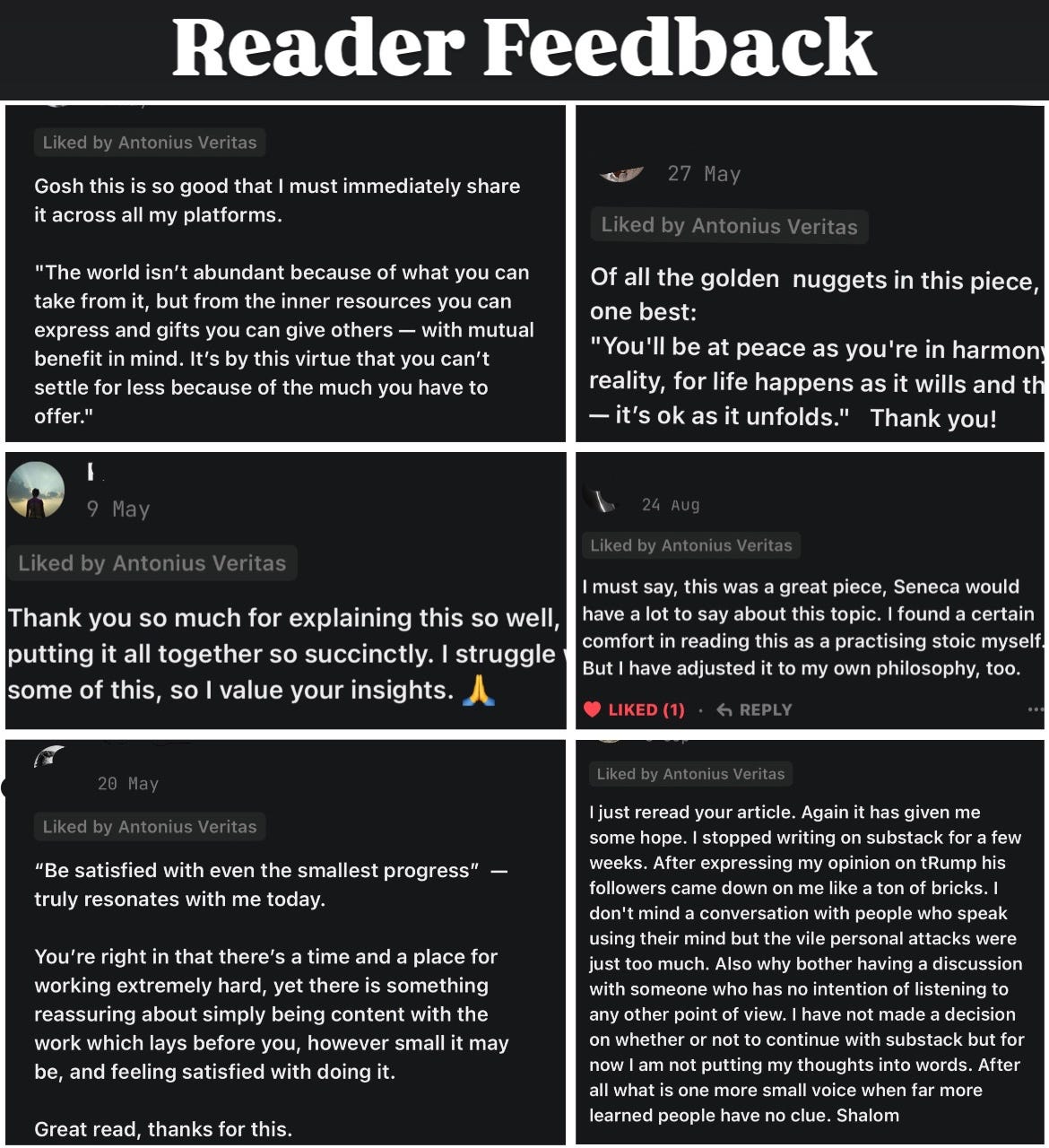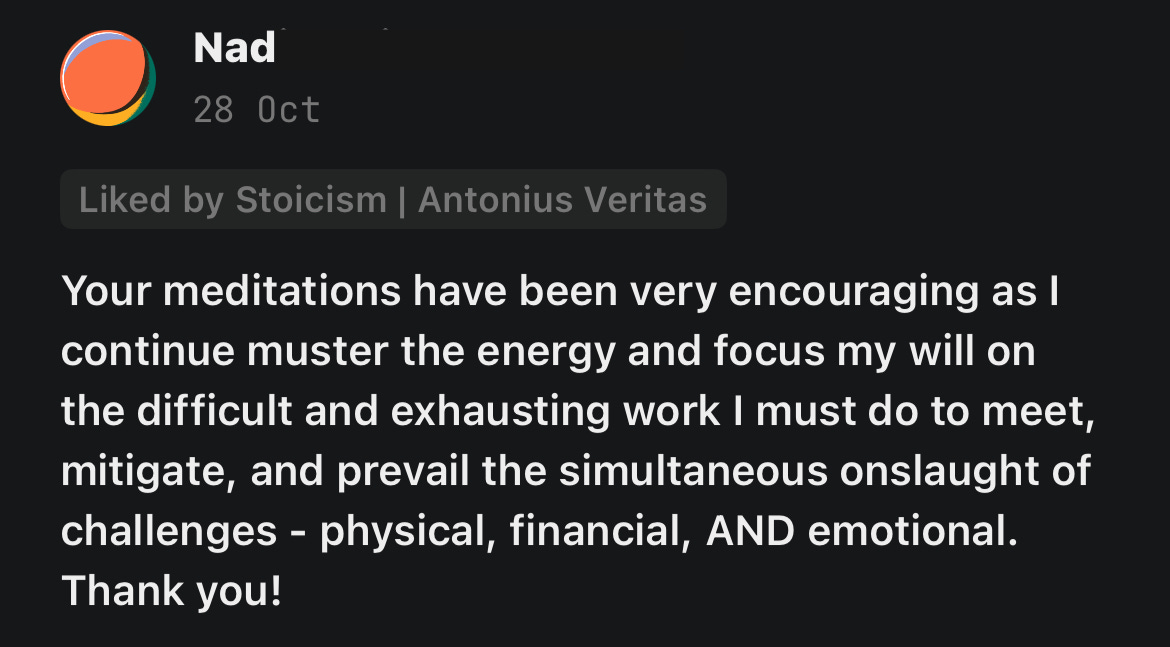LIV. The 27 Strategies to Master the Art of Saying No
Often a very old man has no other proof of his long life than his age.
The ‘Neuroscience-based Tools’ section is a companion for The Stoic Manual to help you become wealthier, happier & more powerful by boosting your resilience, drive, mood, motivation, relationships, focus, and overall health—by Dr. Antonius Veritas.
P.S: Scroll to the end for the 27 unconventional strategies plus real-world practice drills to help you say no—without the great cost of losing your social capital, perceived value, or being passed on for future opportunities.
“You live as if you were destined to live forever, no thought of your frailty ever enters your head, of how much time has already gone by you take no heed. You squander time as if you drew from a full and abundant supply, though all the while that day which you bestow on some person or thing is perhaps your last.” — Seneca
My favorite Stoic, Seneca, quipped that,
“Often a very old man has no other proof of his long life than his age.”
That statement has stuck with me.
See, we don’t lose time all at once.
It drips through the cracks, bit by bit—on meaningless social obligations, idle distractions, or the insidious pull of habits that lead us away from what matters most.
It’s easy to let the demands of others, the fear of disappointing them, or the silent malignancy of “just this once,” steal our hours.
But we end up sacrificing the life we’re meant to live.
Our power, then, lies in how decisively and courageously we can say no.
No to what doesn’t serve us.
No to what drains us.
No to what dilutes our essence.
Saying no is clarity.
It’s the practice of honoring our priorities, aligning our actions with purpose, and reclaiming the power to choose how we live.
For me, my priorities are writing, practicing medicine, and tending to my relationships.
These sacred sanctuaries help me to express my essence and to serve my community.
They demand my effort and reward me with joy & meaning.
Yet, saying no is harder than it seems.
Our world praises productivity but punishes boundaries, saying yes feels like a virtue and no—one of Shakespeare’s betrayals.
Sometimes the real challenge lies not in declining others but in mastering ourselves.
How often do we sacrifice our energy to fleeting thoughts or weak emotions—jealousy, doubt, envy—without pausing to ask if they deserve the stage?
How often do we say yes to fear, comparison, or habits that hollow us out?
“How many have laid waste to your life when you weren’t aware of what you were losing,
how much was wasted in pointless grief, foolish joy, greedy desire, and social amusements—
how little of your own was left to you.
You will realize you are dying before your time!” — Seneca
We should be cautious of these internal thieves for they’re just as dangerous as the external and imposing demands.
Saying no is a skill, and like all skills, it improves with practice.
It begins with understanding what we value so that our no is always in service of a greater yes—focused through the lens of what we want to nurture, who we’re protecting, and what impact we want to leave.
It’s a promise to ourselves: that our time and energy will be spent on what compounds.
When we say no to mediocrity, we say yes to excellence and high-quality work that brings us the most rewards, wealth, and power.
When we decline distractions, we accept focus and the ecstasy of flow state.
When we refuse to let others dictate our worth, we affirm our standards and self-love. We boost our self-esteem.
However, we’ll also be wise to understand that in saying no we’re not turning our backs on others.
It’s a shift from letting life happen to us to taking command of it, creating a reality where every yes is deliberate—potent, and every no is liberating.
However, this is easier said than done.
We all have those moments where we hesitate to say no—to people who don’t value us, to the allure of cheap pleasures, to the parts of our minds that feed on negativity.
We find ourselves caught in spirals of procrastination or people-pleasing, wasting time on things we know don’t deserve it.
“People are frugal in guarding their personal property;
but as soon as it comes to squandering time they are most wasteful of the one thing in which it is right to be stingy.” — Seneca
That is where the real work begins.
The good news is that saying no becomes easier with clarity and a bit of tact that I’ll show you down below.
Clarity about who we are, what we want, and the life we’re building.
Clarity reveals the real cost of every yes, showing us how much more we can achieve when we reclaim that time and energy for pursuits that nourish us—whether that’s building something extraordinary, mastering a craft, establishing power, or forging meaningful relationships.
Then, and only then, do we become an unstoppable force.
The 27 Unconventional Strategies to Master the Art of No
Saying no is a lost art.
Most people decline requests at the great cost of losing their social capital, perceived value, and being passed on for future opportunities.
But here are 27 unconventional strategies, plus real-world practice drills to help you say no while being graceful, polite, friendly, appear like a team player, and without guilt.
These will help you apply what you’ve learned today for the maximum return on the time you’ve invested reading this entry.
1. The “Reverse Yes” Manoeuver
Say yes in a way that makes the requester decline for you.
Do you like this entry so far? ⭐️
Support the publication to read the rest and access 100+ practical insights to help you apply Stoicism in your daily life, neuroscience-based tools & meditations.
Join 8000+ other readers.
What my supporters are saying…




